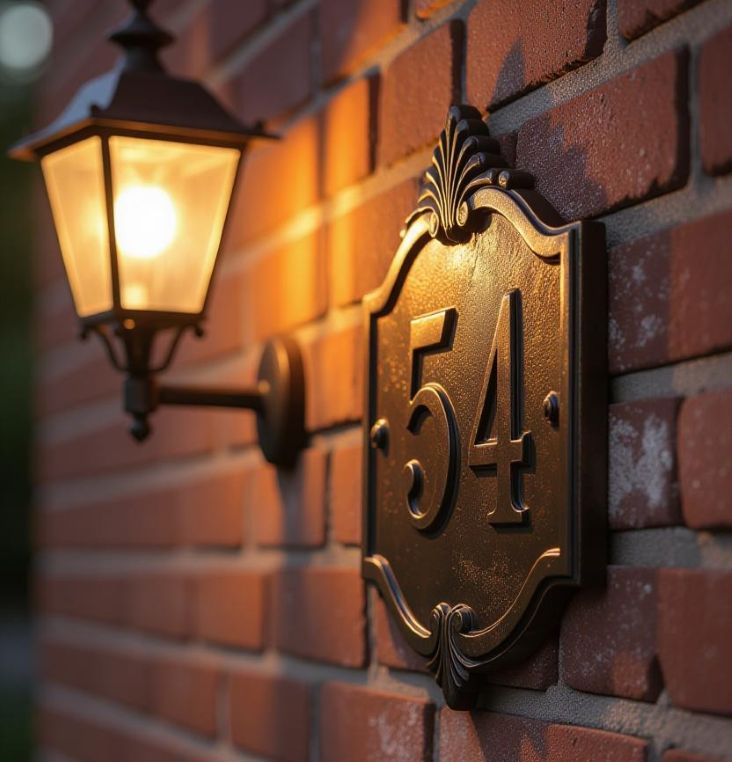From Street Signs to Storylines: The Symbolism of House Numbers in Fiction

Every address tells a story before a single word is read. From the haunted “Number 4 Privet Drive” in Harry Potter to the lonely house at “124 Bluestone Road” in Toni Morrison’s Beloved, authors have long used house numbers and engraved plates to build meaning. A simple number or street name can become a symbol of identity, mystery, or belonging, turning ordinary signs into literary landmarks.
Writers understand that a home’s number is more than an address. It’s often a clue, a motif, or a mirror to a character’s inner world. Much like how designers personalize plaques and signs for real houses, storytellers do the same on the page. On platforms like AllesMakkelijk, where people can have text printed on the sign (tekst op bord laten bedrukken) to reflect their identity or family name, this simple act mirrors what authors do, imprinting meaning and personality onto fictional homes that feel alive and memorable.
The Address as a Character
In many novels, the address itself becomes a silent character. Think of 221B Baker Street. Long after Sir Arthur Conan Doyle’s Sherlock Holmes put it on the map, the address continues to live in readers’ minds as a symbol of intellect and deduction. The moment readers encounter that number, they already expect a world of mystery and reason. The address doesn’t just locate Holmes’s home; it locates his identity within London’s foggy streets.
Authors use this technique to make settings memorable. An address like “742 Evergreen Terrace” from The Simpsons (yes, television writers do it too) instantly triggers familiarity. It anchors the chaos of the story into something domestic, even ordinary. But within that ordinariness, writers build universes that feel alive, specific, and emotionally real. You can explore more about how creativity bridges literature and art in this insightful piece on literature’s fictional arts from novels.
House Numbers as Symbols of Memory and Belonging
Numbers and names on homes often carry emotional weight. In literature, they can represent belonging, displacement, or the desire for roots. For example, in The House on Mango Street by Sandra Cisneros, the narrator’s connection to her home—and her yearning for a better one—mirrors the struggle for identity in a working-class neighborhood. The address is more than a place; it’s a symbol of growth, aspiration, and sometimes, confinement.
Authors also use engraved signs to evoke nostalgia or grief. A character who polishes a weathered number plate might be clinging to lost family memories. A missing number or faded sign might hint at disappearance, decay, or mystery. Just as real homeowners take pride when they personalize their signs, fiction writers give emotional resonance to the simple act of marking a place as one’s own.
The Mystery in the Number
In thrillers and gothic tales, house numbers often hide secrets. “Number 9 Dream,” Haruki Murakami’s surreal novel, transforms a simple number into a gateway between reality and imagination. Similarly, in Daphne du Maurier’s Rebecca, Manderley—the grand estate with its engraved nameplate—becomes a haunted presence. Its sign welcomes readers to beauty and danger in equal measure.
Such details make settings feel alive. Readers remember addresses that hold mystery. They know when an author names a house, that house will play a role. A sign on a gate or an inscription on a mailbox becomes more than background—it becomes prophecy.
Crafting Symbolism Through Everyday Objects
Good storytelling thrives on detail. A house number or a nameplate grounds fantasy in reality. It makes a setting believable while giving it symbolic weight. Whether it’s the anonymity of “Room 101” in George Orwell’s 1984 or the mythical homes of fairy tales, writers use these markers to control atmosphere and tone.
- House numbers can signify order or chaos.
- Street names can suggest destiny or history.
- Engraved plates can evoke legacy or secrecy.
Through these tiny details, readers find a sense of place. Fiction is full of worlds that feel real because they are built upon ordinary symbols—numbers, letters, signs—that we see every day but rarely think about. That’s the beauty of literary design: the power to turn the mundane into the meaningful.
Why It Still Matters Today
Even modern writers continue to use addresses as emotional anchors. In contemporary fiction, an apartment number might symbolize urban loneliness. A street name might reflect cultural identity. Much like readers today might choose to have text printed on the sign to personalize their homes, authors personalize their fictional spaces to reflect deeper human truths.
House numbers in fiction remind us that identity begins with place. We may move, change, or grow, but we always remember the numbers that once marked our belonging. Every address, whether real or imagined, is a story waiting to be read.
Tags: cultural identity, fiction writing, literature, storytelling, symbolism
